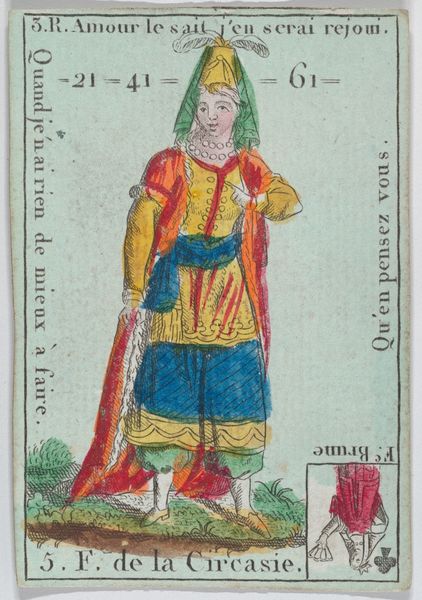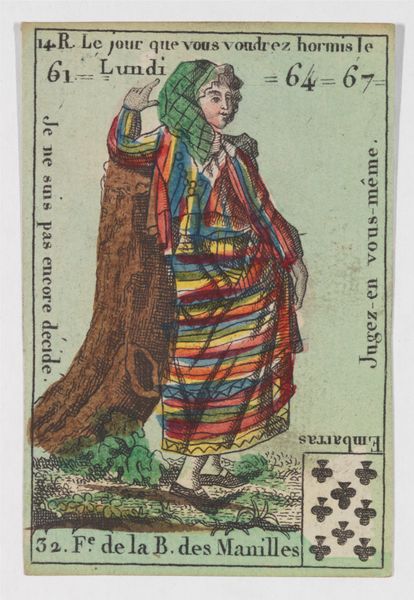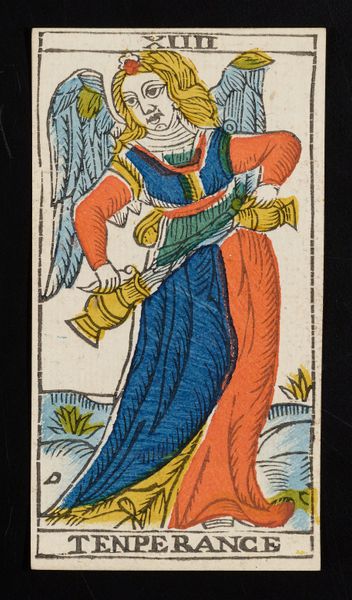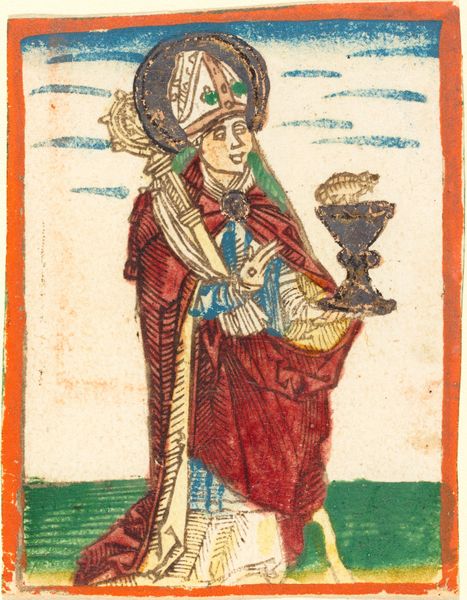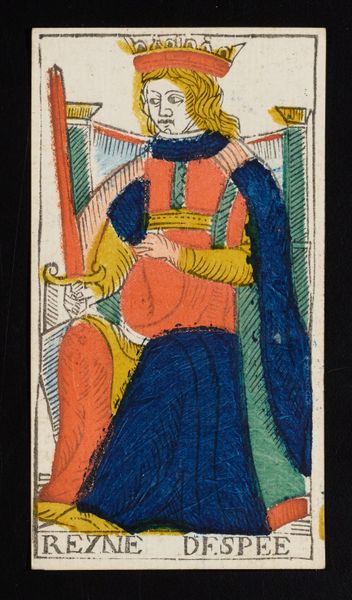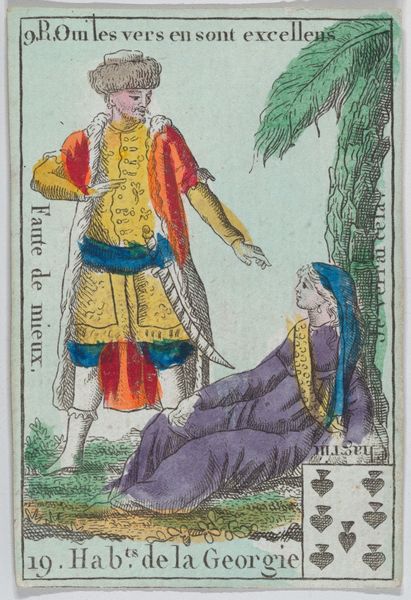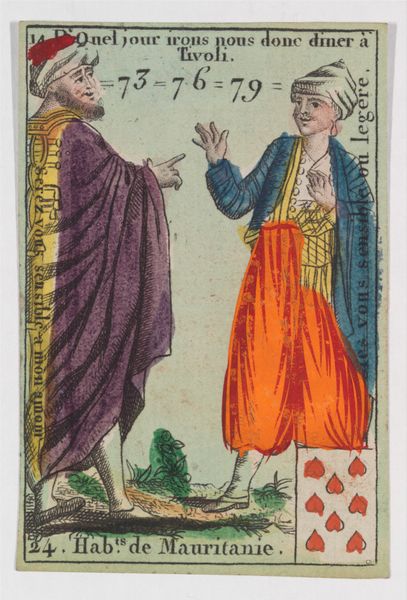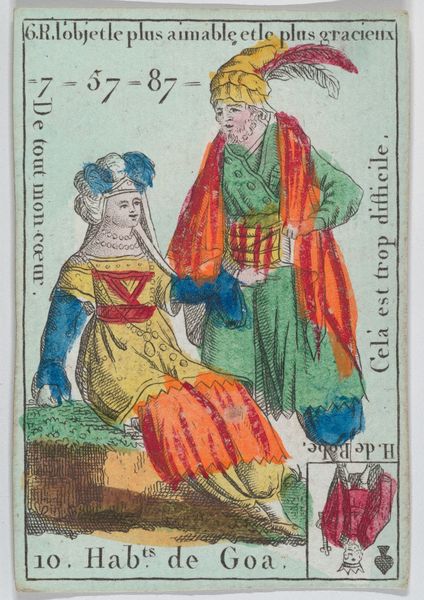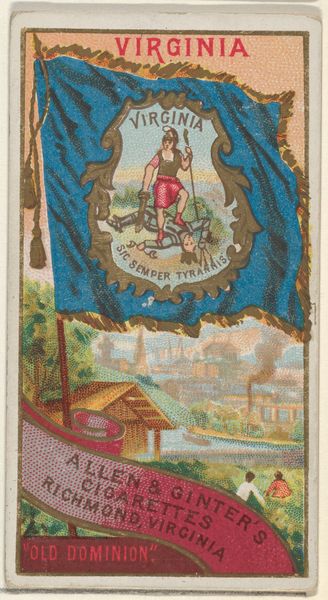
drawing, coloured-pencil, painting, print, etching, engraving
#
portrait
#
drawing
#
coloured-pencil
#
painting
# print
#
etching
#
coloured pencil
#
history-painting
#
northern-renaissance
#
engraving
Dimensions: 3 3/16 × 2 1/16 in. (8.1 × 5.3 cm)
Copyright: Public Domain
Editor: We’re looking at "F. d'Armenie from playing cards 'Jeu d'Or'," an 18th-century etching and engraving now at the Met. The figure looks exotic, almost like an actress in a play. I’m curious, how does this image function within its cultural context? Curator: That’s a key question. These “Jeu d’Or” cards weren’t just for games; they reflect a growing European fascination with, and often misrepresentation of, different cultures. This "Armenian Woman," is part of a broader trend of depicting exoticized versions of people from around the world, fueled by exploration and colonialism. The card presents an idea of Armenia filtered through a European lens. Notice the details – the specific colours of her clothing. Editor: The card's text at the top says: “Because I take you for company.” That line plus the vibrant clothing do lend themselves to a sense of imagined culture. Is that text always tied to the Armenian woman across this playing card series? Curator: Exactly. This particular card uses imagery and text to position the Armenian woman in a particular relationship to the viewer. The phrase itself places the “othered” figure within a frame of entertainment, almost as an object for leisure rather than a member of contemporary society. I ask you to also reflect upon how the composition itself also positions her within that type of frame, especially alongside the numbers in the card and other decorative ornamentation. Editor: So it’s a romanticized view, more about European desires and fantasies than actual Armenian culture. Were Armenians even consulted in these portrayals? Curator: That's very unlikely. Such images reinforce power dynamics. What we see isn’t necessarily a window into 18th century Armenia, but a reflection of 18th-century Europe and the structures within the elite that consumed artworks such as this. Editor: That’s fascinating. I thought it was just a pretty picture on a playing card, but it holds so much historical context. Thanks for unpacking that! Curator: My pleasure. These visual depictions can tell us so much about not just art but cultural ideas when art and image creation took place.
Comments
No comments
Be the first to comment and join the conversation on the ultimate creative platform.

